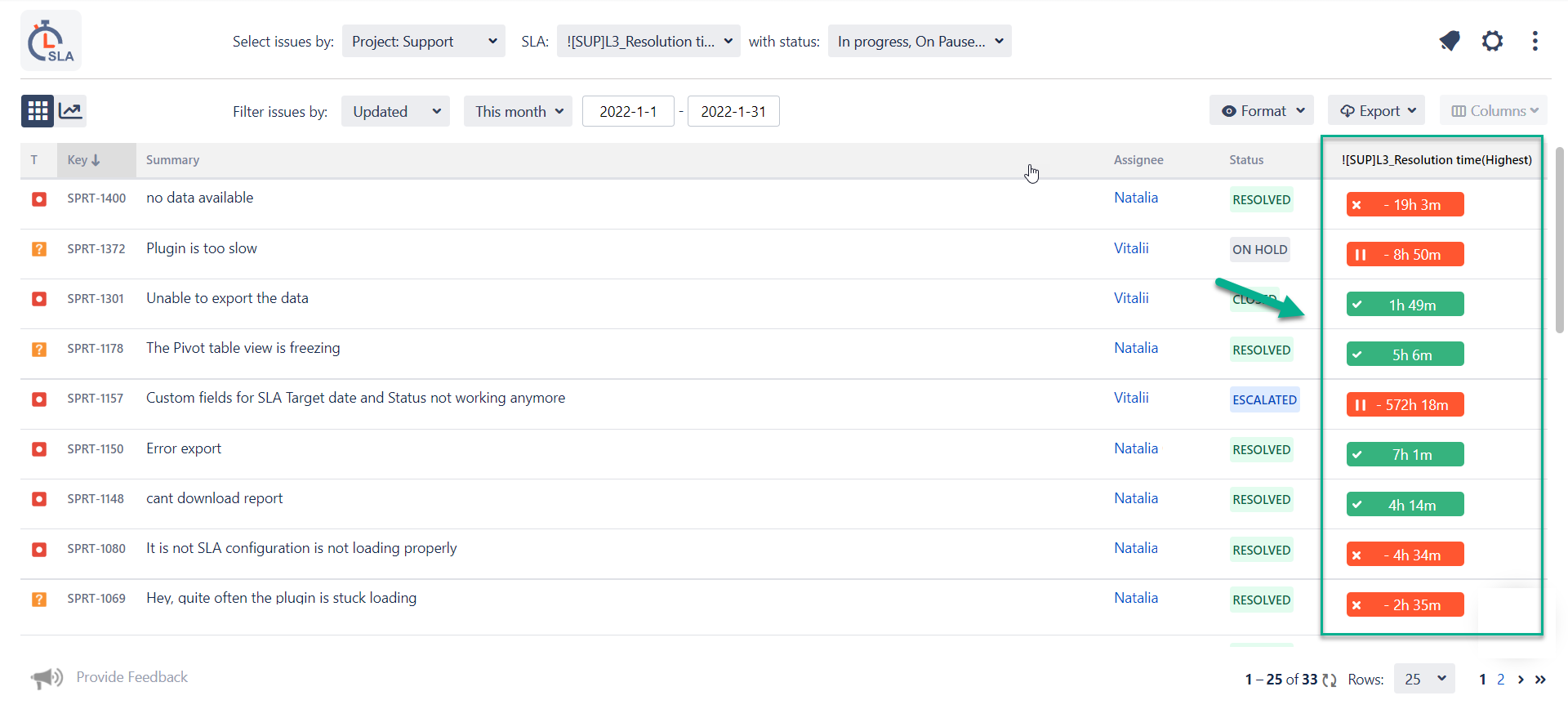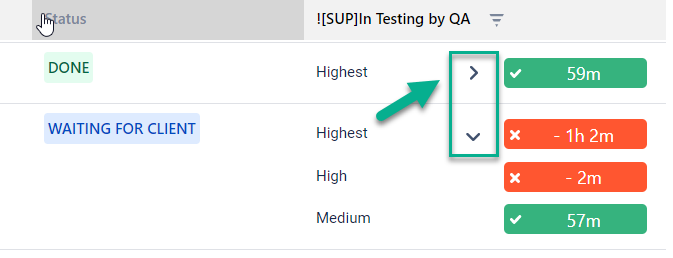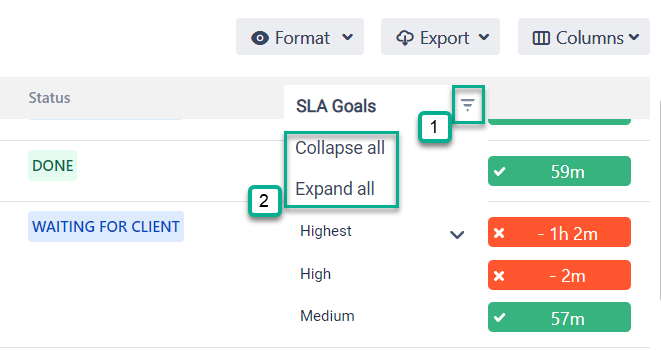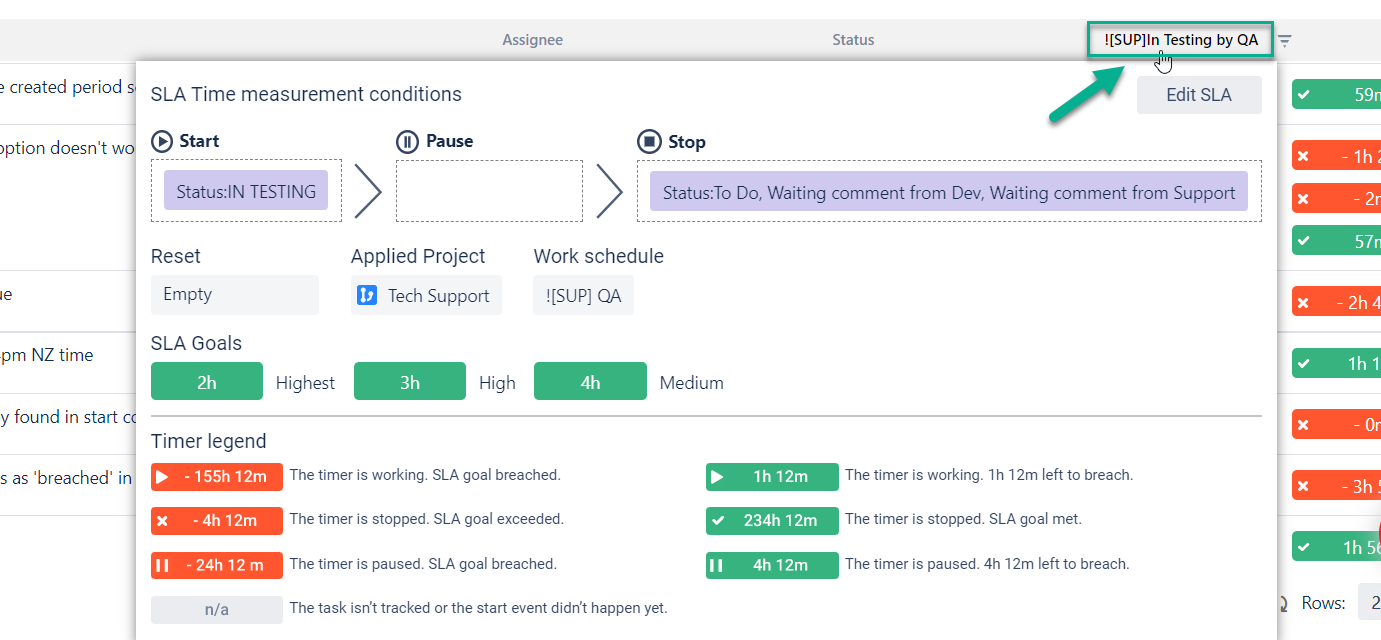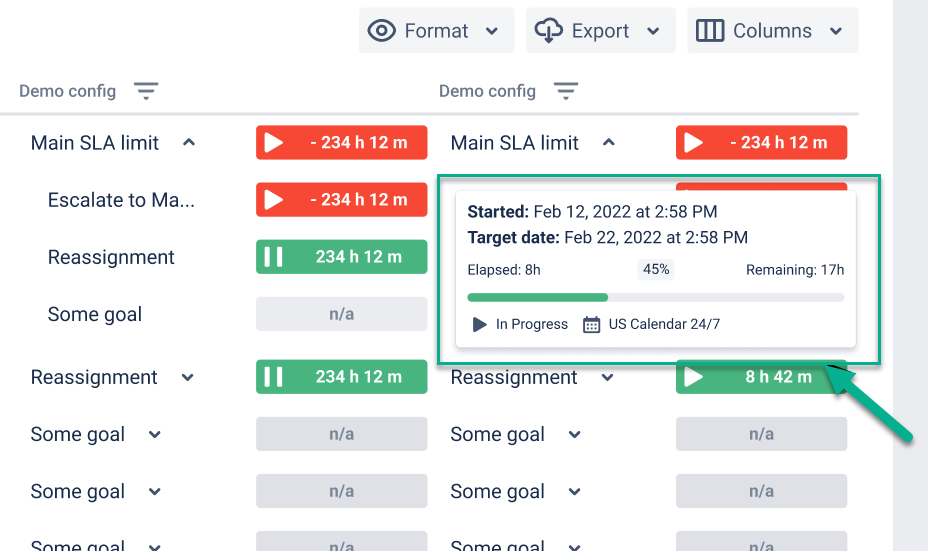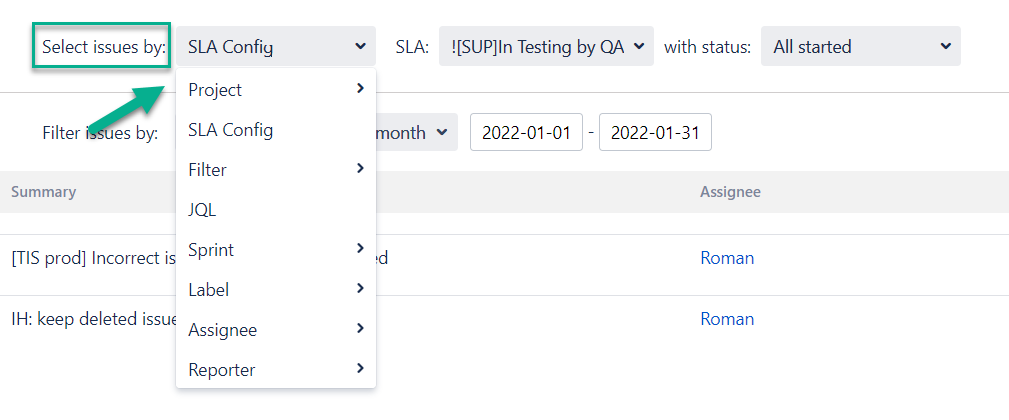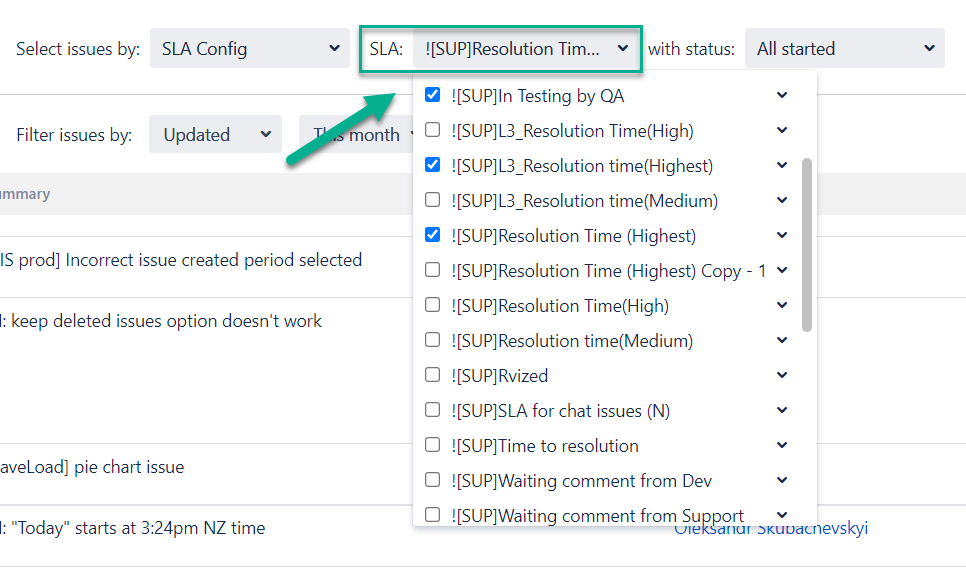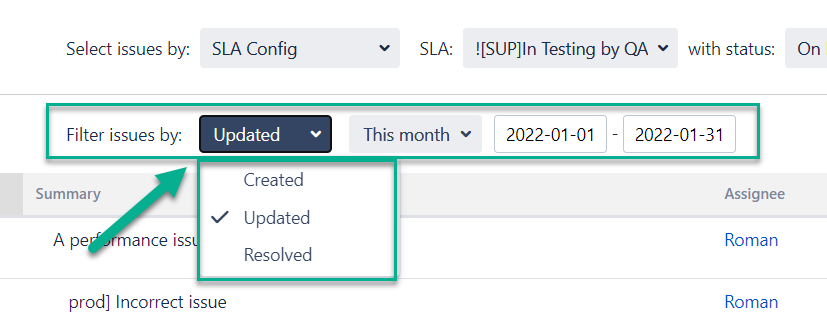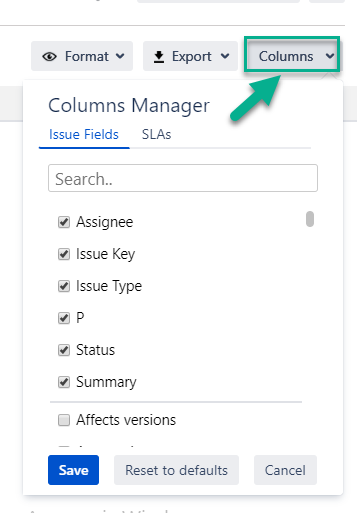1. Customization data about SLA timers
After proper settings in the SLA Configuration menu, click a “Save” button and go to the report or the main page(by clicking SLA time and report logo) and the results will be displayed on the grid.
The SLA report contains columns with information about issues (Type, Key, Summary - are constant; Assignee, Status, Time to SLA, etc. - can be changed at the "Columns" menu) and a column with SLA Timer data of every issue.
On the SLA timer, you can also monitor how much time is left until the SLA goal will be exceeded. Tickets with exceeded timers have a red color. Before the issue meets the time goals or after it is met a goal - green.
If an issue has more than one SLA goal for a SLA timer, you can see the drop-down button. Click it and get a list with the entire SLA timers for one ticket.
Hover your mouse over the title of the SLA Config column and view the detailed information about its setting.
Also, you can see % of completion SLA to the target date, just click the SLA timer to see the full details of your SLA.
2. Issue list customization
In the report grid view, you can customize the issue list by setting such points:
Issue list selection;
Date ranges;
Time Format;
Column manager.
2.1. Issue list selection
You can filter a list of issues for SLA Report using selections:
by Project, Assignee, JQL, Filter, Label, Reporter, Sprint
If a chosen SLA config option selection will be only by SLAs, you can choose at the next drop-down menu.
by SLA Config
by Status of SLA Timer: All started, In progress, On Pause, Met, Exceeded, Timer not started, etc.
2.2. Date Ranges
Use Date ranges to customize report timeframes.
By clicking the first bar, you have the ability to select 3 types of date ranges:
Created - dates of creating the issues
Updated - dates, when they were updated
Resolved - dates, when the tasks were finished
Then you can choose the period to generate the report. It can be Date ranges (yesterday, last week, this month, etc.) or you can select the custom time duration From date - To date.
2.4. Choose a Time format
Select the time format of status duration in a "Format" field:
HM (Hours, Minutes)
Decimal Hours
Decimal Days
4. Column Manager
In the Column manager, you can manage the Issue Fields and configure SLAs
Related use case article: How to prepare the SLA Time and Report Gadget using native Jira Gadgets
If you need help or want to ask questions, please contact us through SaaSJet Support or via email support@saasjet.atlassian.net
Haven't used this add-on yet, then try it now!
